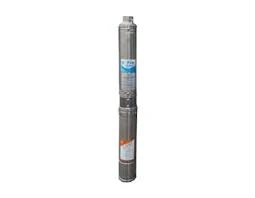Nov . 16, 2024 16:48 Back to list
deep well pump set up
Setting Up a Deep Well Pump A Comprehensive Guide
When it comes to supplying water for irrigation, residential use, or even industrial purposes, deep well pumps play a crucial role. They are designed to extract water from significant depths, making them essential for areas where groundwater is available but not easily reachable. Setting up a deep well pump may seem daunting, but with the right guidance, it can be accomplished efficiently and effectively. Here, we will explore the key steps involved in setting up a deep well pump.
Understanding Deep Well Pumps
Deep well pumps are submersible pumps that are installed below the surface of the water table, often several hundred feet deep. These pumps work by pushing water to the surface rather than pulling it, making them ideal for deep wells. They typically consist of a motor, a pump, and a collection of pipes and fittings that transport water to the desired location.
Assessing Your Needs
Before diving into installation, it’s vital to assess your water needs. Consider factors like
- Water Demand Estimate how much water you require daily for household or agricultural use. - Well Depth Determine the depth of your well. A deeper well usually requires a more powerful pump. - Water Quality Test the water for contaminants to choose a suitable pump and filtration system.
Selecting the Right Pump
Choosing the right deep well pump is crucial for optimal performance. Factors to consider include
- Pump Size Generally measured in horsepower, select a pump size that matches your water needs and well depth. - Material Stainless steel pumps are more durable and resistant to corrosion compared to plastic options. - Flow Rate This is the amount of water the pump can deliver per minute. Ensure it meets your requirements.
Required Tools and Materials
To set up your deep well pump, gather the following tools and materials
deep well pump set up

- Deep well pump - Pump control box - PVC or steel pipes for plumbing - Electrical wiring and conduit - Safety gear (gloves, goggles, etc.) - Wrenches and screwdrivers for assembly - Teflon tape for sealing joints
Installation Steps
1. Preparation Begin by shutting off the power supply to the well’s electrical circuit. This is crucial for safety.
2. Lowering the Pump Depending on the design, either pull the pump to the surface or use a hoist to lower it into the well. Ensure the pump is submerged at the right depth — typically, it should be about 10 feet below the water table.
3. Connecting the Pipes Attach the discharge pipe to the pump and ensure it's securely fastened. The other end of the pipe should connect to the surface piping that leads to your home or irrigation system. Use Teflon tape to seal threads and avoid leaks.
4. Electrical Connections Make sure to follow local electrical codes. Connect the pump to the control box and power source. Ensure all connections are secure and waterproof.
5. Testing Before putting the system into regular use, test it. Turn on the power supply and check for leaks, proper operation, and flow rate consistency.
6. Maintenance Routine After installation, establish a routine for maintenance. Regularly inspect the pump, clean filters, and check for any wear and tear.
Safety Considerations
Safety should be a priority when setting up a deep well pump. Always wear protective gear, avoid working in wet conditions, and ensure that all electrical connections are adequately insulated and secure.
Conclusion
Setting up a deep well pump is a practical solution for accessing groundwater, provided the setup is done correctly. By carefully selecting the right pump, following a systematic installation process, and adhering to safety precautions, you can ensure a reliable source of water. Whether for agricultural, residential, or industrial purposes, a well-installed deep well pump will serve you effectively for years to come.
-
Submersible Water Pump: The Efficient 'Power Pioneer' of the Underwater World
NewsJul.01,2025
-
Submersible Pond Pump: The Hidden Guardian of Water Landscape Ecology
NewsJul.01,2025
-
Stainless Well Pump: A Reliable and Durable Pumping Main Force
NewsJul.01,2025
-
Stainless Steel Submersible Pump: An Efficient and Versatile Tool for Underwater Operations
NewsJul.01,2025
-
Deep Well Submersible Pump: An Efficient 'Sucker' of Groundwater Sources
NewsJul.01,2025
-
Deep Water Well Pump: An Efficient 'Sucker' of Groundwater Sources
NewsJul.01,2025
-
 Submersible Water Pump: The Efficient 'Power Pioneer' of the Underwater WorldIn the field of hydraulic equipment, the Submersible Water Pump has become the core equipment for underwater operations and water resource transportation due to its unique design and excellent performance.Detail
Submersible Water Pump: The Efficient 'Power Pioneer' of the Underwater WorldIn the field of hydraulic equipment, the Submersible Water Pump has become the core equipment for underwater operations and water resource transportation due to its unique design and excellent performance.Detail -
 Submersible Pond Pump: The Hidden Guardian of Water Landscape EcologyIn courtyard landscapes, ecological ponds, and even small-scale water conservancy projects, there is a silent yet indispensable equipment - the Submersible Pond Pump.Detail
Submersible Pond Pump: The Hidden Guardian of Water Landscape EcologyIn courtyard landscapes, ecological ponds, and even small-scale water conservancy projects, there is a silent yet indispensable equipment - the Submersible Pond Pump.Detail -
 Stainless Well Pump: A Reliable and Durable Pumping Main ForceIn the field of water resource transportation, Stainless Well Pump has become the core equipment for various pumping scenarios with its excellent performance and reliable quality.Detail
Stainless Well Pump: A Reliable and Durable Pumping Main ForceIn the field of water resource transportation, Stainless Well Pump has become the core equipment for various pumping scenarios with its excellent performance and reliable quality.Detail
